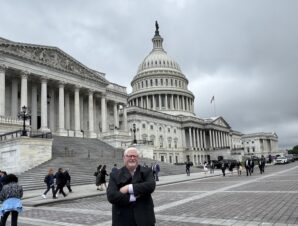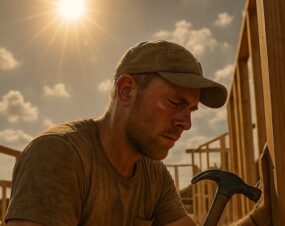Designing a Desert Oasis: Achieving LEED Certification With Copper
Highlighting the integrated design approach of the innovative Arizona Health Sciences Education Building, video case study offers CE credits for architects
Together with GreenCE, the Copper Development Association (CDA) has developed a two-part video case study, highlighting the craftsmanship of the Health Sciences Education Building at The University of Arizona College of Medicine-Phoenix (HSEB) as one of the most innovative, sustainable construction projects in the United States utilizing copper.
Now available, “Oasis: Designing a LEED Campus in the Desert – Part 2,” the video case study discusses how the integrated design approach affected the cost and design of the HSEB building; describes the role of the contractor in LEED implementation during construction; details the MR (Materials & resources) and IEQ (Indoor Environmental Quality) credits that the contractor has a primary responsibility for during construction; explains the roles and responsibilities of various construction team members for the commissioning process as it relates to Enhanced Commissioning (EAc3); and articulates internal and external conditions of a project that can affect Increased Ventilation (IEQc2). Architects can register for the free online course on the GreenCE website. Part one can be accessed here.
“Architects can use this course to fulfill both their annual CE requirements and their requirements as a LEED professional as well,” said Wayne Seale, Project Manager and Architectural Applications Specialist at CDA. “It allows them to see copper as a sustainable alternative to other metals. In this case, the copper cladding serves as a sunscreen to keep excessive desert heat out of the building.”
Using nearly 60,000 copper panels and more than 10,000 copper parts, the HSEB is unique in that it features a custom copper-cladding system using 99-percent recycled copper. The abstract pattern of the cladding system was inspired by the building’s surrounding southwestern landscape and was designed by arranging 26 different copper panels in multiple combinations. At 268,000 square-feet, the need for reduced energy consumption played a large role in designing the HSEB, which also required the specifically-engineered cladding system to protect its occupants from the extreme desert environment. The multi-million dollar building opened its doors in the fall of 2012.
With its ability to quickly reject heat, the copper-clad exterior serves as a shield from outside temperatures that often reach as high as 115 degrees Fahrenheit. The sustainable cladding system adapted rainscreen technology, a system typically used in the northwest to control water leakage. A year after its construction, the HSEB is currently targeting LEED Silver certification for this sustainable design.
The HSEB contains six stories of administration and faculty offices, lecture halls, learning studios, flexible classrooms, clinical suites, gross anatomy facilities, laboratories and conference rooms. The new facility serves as a training ground for 1,200 medical professionals each year.
Part II of the video case study is registered with the USGBC and with the American Institute of Architects (AIA) for one (1) continuing-education credit. The CE course requires architects to watch the video before answering a 10-question quiz about its content. A score of 80% or higher is required to receive a certificate of completion.
via Designing a Desert Oasis: Achieving LEED Certification With Copper.




Join the conversation: